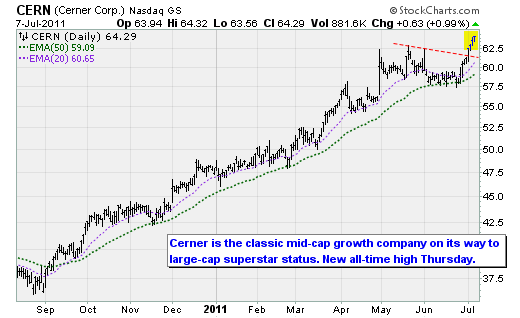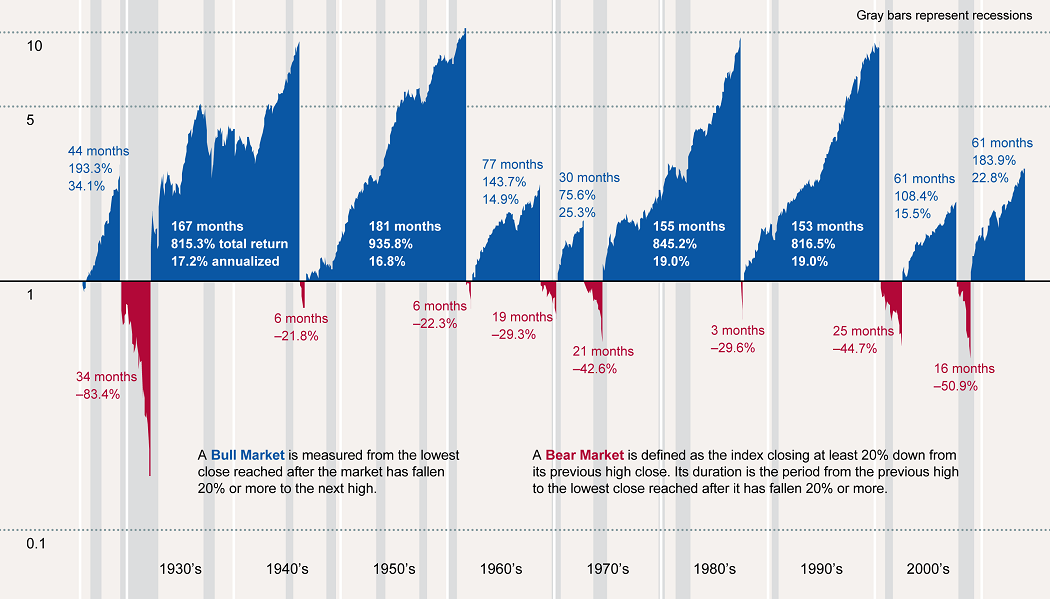Some funds shone though bull and bear markets
Post on: 27 Май, 2015 No Comment

Story Highlights
- Stock market is above its 2007 highs, but some funds did far better Few, if any, timed the market precisely Yacktman Focus gained 77% in total market cycle
Every decade or so, we get treated to a great astronomical event, such as the transit of Venus or the Smacking of Siberia. Right now, we have a relatively rare financial event, of sorts: a round trip from bear market to bull market recovery.
What’s so wonderful about that, except that you’re more or less whole after the worst bear market since Herbert Hoover was in office? It gives you a chance to look at your funds over a complete market cycle. In theory, those mutual funds that you pay good money for should do well in both good markets and bad. In reality, few do.
What most investors would really like, of course, is a person to tell them when to get into the market, and when to get out. Most people would like a magic goat that spits rubies, too. Unfortunately, both of these are hard to find in the real world.
Mark Hulbert, editor of the Hulbert Financial Digest, has spent much of his career tracking market timers. He’s not finding a lot of heroes in the latest market cycle. Clearly, no one did it perfectly, he says, meaning that no one told investors to sell at the top of the Dow Jones industrial average on Oct. 9, 2007, then sent them back in at the bottom on March 9, 2009.
The question, then, is how much leeway you have to give timers, and at which point that leeway becomes too much. He’s still trying to figure that out. The last 5½ years constitute a perfect laboratory for market timers, and they didn’t acquit themselves very well, Hulbert says.
But the market cycle isn’t just for testing timers. It’s a good chance to see how well your mutual fund has served you. If you’re investing in an actively managed fund, you’d expect it to fall less in a bear market than the average fund, and rise more in a bull market than average. Otherwise, you’d be better off with an index fund, which does neither, but charges far less than an actively managed fund.
The results are not as dismal as they may well be for market timers: Several funds did, in fact, beat their peers both on the way down and on the way up. Keep in mind, however, that the Standard & Poor’s 500 stock index fell 55% in the bear market. Falling less than 55% may not seem heroic to you, but a 50% loss would generally put you in the top half of your peers.
Consider Tilson Dividend fund (TILDX). which was in the top 25% of all equity-income funds in the bull market and the bear market, according to Lipper, which tracks the fund. It fell 38.7% in the bear market, including reinvested dividends. It rose 148.4% in the ensuing bull market, which also landed it in the top quartile among its peers. Its total return for the period: 52%.
A 52% gain over 65 months — more than five years — may not seem like much for a stock fund. But it’s a fine performance, given the volatility of the market. Other winners among large-company funds:
• Large-cap core funds look for stocks of growing companies whose shares are selling at a reasonable price, relative to earnings. Top performer: Managers AMG Yacktman Focus fund (YAFFX). up 77% for the round trip. Lead manager Don Yacktman will hold cash when he can’t find stocks selling at reasonable prices. Currently, the fund has about 15% of the fund’s assets on the sidelines.
• Large-cap growth funds look for stocks of companies with growing earnings. John Hancock U.S. Global Leaders Growth (USGLX) took top honors in this category. The fund looks for high-quality companies with the ability to sustain growth over the long term, and tends towards a concentrated portfolio — it has about 30 holdings now. The fund plunged 46% in the bear market, but soared 152% in the bull market, for a round-trip total gain of 35%.

• Large-cap value funds try to find beaten-up stocks of sound but misunderstood companies. ING Corporate Leaders (IACLX) led the way here, falling 50% in the bear market, but snapping back 161% in the bull market. Total round-trip ticket: 30%.
Other funds worthy of mention:
• Eaton Vance Atlanta Capital SMID Cap (EAASX ), up 63% for the cycle. Unlike many small-cap funds, this fund holds onto growing companies as they enter the midcap arena.
• Guggenheim S&P 400 Midcap Pure Growth (RFG), up 68% for the cycle. This exchange-traded index fund smoked its actively managed competition.
* Monetta Young Investor (MYIFX) is run by an old hand: Robert Bacarella, chairman and CEO of Monetta since 1996. His son is co-manager. The Young Investor part is a bit of a stretch these days: According to its website, it invests in the stocks of high-quality, well-known companies that are recognized by most investors, including children and teenagers.
The fund keeps half its assets in exchange-traded index funds, and puts the rest in stocks of the Bacarellas’ choosing. It lost 45% in the bear market, but gained 198% in the bull market, for a round trip gain of 61%.
Mind you, these are some of the best funds for the cycle. A few had truly horrendous records. Chesapeake Core Growth lost 60% in the bear market, and gained 103% in the bull market, leaving it with a 19% loss for the cycle.
The bull market isn’t over — yet — and whether the current winners of the cycle can continue to do so is an open question. For many investors, the best panacea for a bear market is still a diversified portfolio that includes cash and bonds. Nevertheless, these funds have at least earned (some) of their pay.














